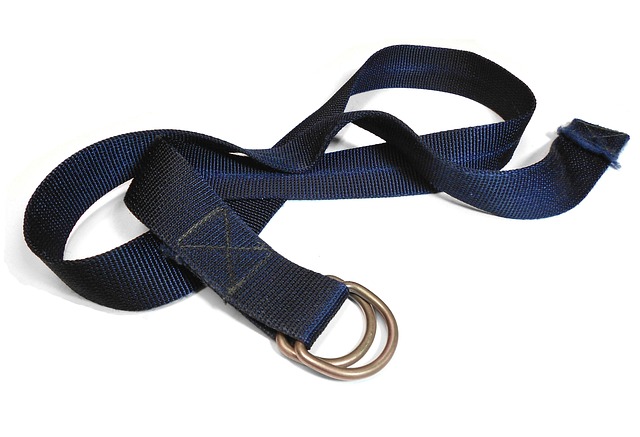Understanding and maintaining your engine's timing belt is crucial for optimal car performance and avoiding costly repairs. Regularly inspect for wear signs like cracks or misalignment, addressing early issues like unusual noises or decreased power. Replace the belt between 60,000-100,000 miles, guided by manufacturer recommendations and warranties. Follow a 5-step replacement process: inspection, preparation, removal, installation, and final checks. After replacement, prioritize post-care: adjusted service schedules, alternator belt checks, and regular maintenance for sustained engine health. Choose an expert service center for reliable timing belt replacements.
“Ensure your engine’s longevity and performance by understanding the vital role of its timing belt. This crucial component synchronizes the rotation of essential components, maintaining a smooth and efficient power train. This article guides you through the intricacies of timing belt replacement, from recognizing the signs of wear to a step-by-step process for a successful installation. Learn how proper post-replacement care can extend your engine’s lifespan, helping you make informed decisions regarding Select Timing Belt Replacement.”
- Understanding Your Engine's Timing Belt
- When to Replace: Signs and Milestones
- The Replacement Process: Step-by-Step Guide
- Maintaining Post-Replacement Care Tips
Understanding Your Engine's Timing Belt

Understanding your engine’s timing belt is crucial for maintaining peak performance and preventing costly repairs. The timing belt synchronizes the rotation of the crankshaft and camshaft, ensuring valves open and close at precisely the right moments during each cylinder’s intake and exhaust cycles. Over time, this vital component wears out, with signs of damage or failure becoming more apparent as mileage accumulates. Regular inspection is key to avoiding unexpected breakdowns; look for cracks, stretch, or misalignment, as these are clear indicators that it’s time for a replacement.
When considering your Select Timing Belt Replacement options, it’s important to know the warning signs of impending failure. Familiarize yourself with symptoms like unusual noises, decreased engine power, or oil leakage around the belt. At the first hint of trouble, consult a qualified mechanic to assess the condition of your timing belt and recommend the best course of action. Compare Timing Belt vs Chain Belt replacement tools and their benefits, keeping in mind factors like cost, maintenance requirements, and longevity before making a decision that suits your vehicle’s specific needs.
When to Replace: Signs and Milestones

The decision to replace your engine’s timing belt is crucial for maintaining optimal performance and preventing costly breakdowns. While many vehicle owners wait until they notice a problem, proactive maintenance is key to keeping your car in top shape. Typically, a timing belt should be replaced between 60,000 to 100,000 miles, but this can vary based on your vehicle’s make and model. Regular inspection is essential; look out for signs such as unusual noise, engine misfire, or oil leaks around the belt area. If you notice any of these milestones, it’s time to consider a replacement.
When deciding on the select timing belt replacement timing, remember that manufacturers often recommend specific service intervals. Additionally, checking your car’s warranty for timing belt replacement can provide valuable coverage. Many modern vehicles come with comprehensive warranties that include this critical component, saving you money on repairs. However, if your car is out of warranty or you prefer an affordable timing belt repair, regular maintenance and timely replacement will help extend the life of your engine and avoid more expensive future issues.
The Replacement Process: Step-by-Step Guide

Timing Belt Replacement: A Step-by-Step Guide
Selecting the right time for a timing belt replacement is crucial for your engine’s longevity. While the specific interval varies across vehicle models, understanding the process can help in preventing untimely failures. Here’s a breakdown of efficient timing belt replacement:
1. Inspection: Begin by regularly checking your car’s service manual for recommended replacement intervals. Look for warning signs like unusual noise, difficulty starting, or overheating, which could indicate a failing timing belt.
2. Preparation: Gather the necessary tools and parts specific to your vehicle model. Ensure the workspace is clean, well-lit, and has adequate space for easy access to the engine. Always refer to a reliable repair manual for detailed procedures.
3. Removal of Components: Start by removing the accessory belts, then carefully take off the old timing belt. This involves loosening tensioners and idlers, being mindful of retaining clips or bolts.
4. Installation of New Belt: Ensure the new timing belt is compatible with your vehicle. Install it, double-checking the proper alignment and tensioning. Replace all associated components like tensioners, idlers, and retainers as per the manufacturer’s recommendations.
5. Final Checks: After reinstallation, check for any leaks or improper tensions. Test drive your vehicle to ensure smooth operation and monitor engine temperature, confirming efficient timing belt replacement.
Remember, regular maintenance, including timely belt replacements, is key to preventing costly repairs.
Maintaining Post-Replacement Care Tips

After successfully replacing your engine’s vital components like the timing belt or chain, proper care is essential to ensure longevity and optimal performance. Post-replacement care involves adhering to a new service schedule that may include more frequent checks for the alternator belt replacement, especially during the first few hundred kilometers. This proactive approach allows for any potential issues to be identified early on.
Timely maintenance includes regular oil changes, keeping an eye on coolant levels, and monitoring engine temperatures. It’s crucial to select a service center with experienced mechanics who understand the significance of fast turnaround times for timing belt replacements, ensuring your vehicle remains in top condition without compromising safety or performance.
Regularly checking and maintaining your engine’s timing belt is a crucial aspect of vehicle ownership. By understanding its function, recognizing signs of wear, and adhering to replacement guidelines, you can ensure optimal engine performance and longevity. Following the step-by-step guide and post-replacement care tips will help you make informed decisions regarding your timing belt’s maintenance, ultimately contributing to your vehicle’s overall health and efficiency. Remember, selecting the right timing belt replacement parts and timely service are key to keeping your engine running smoothly for years to come.
